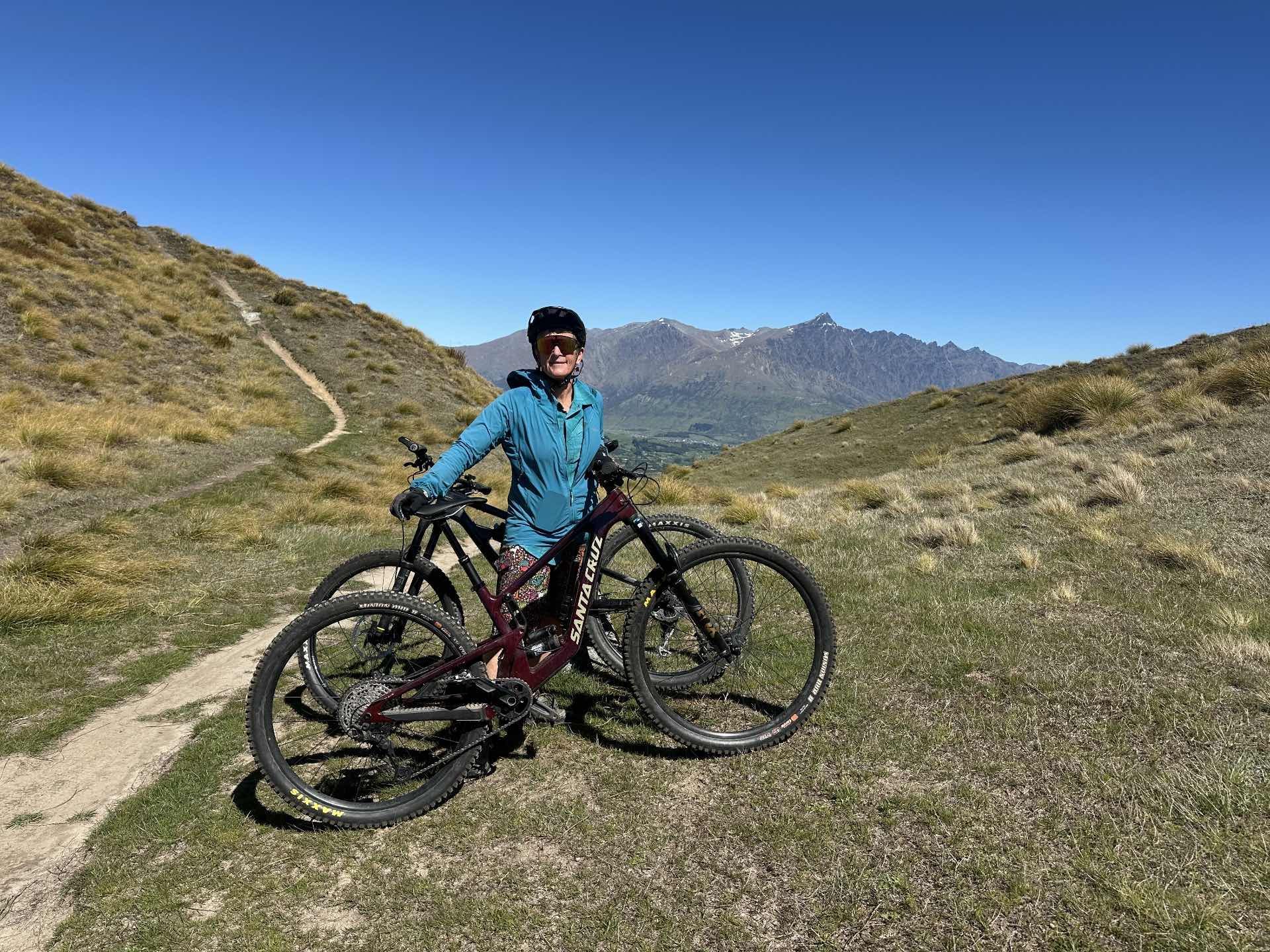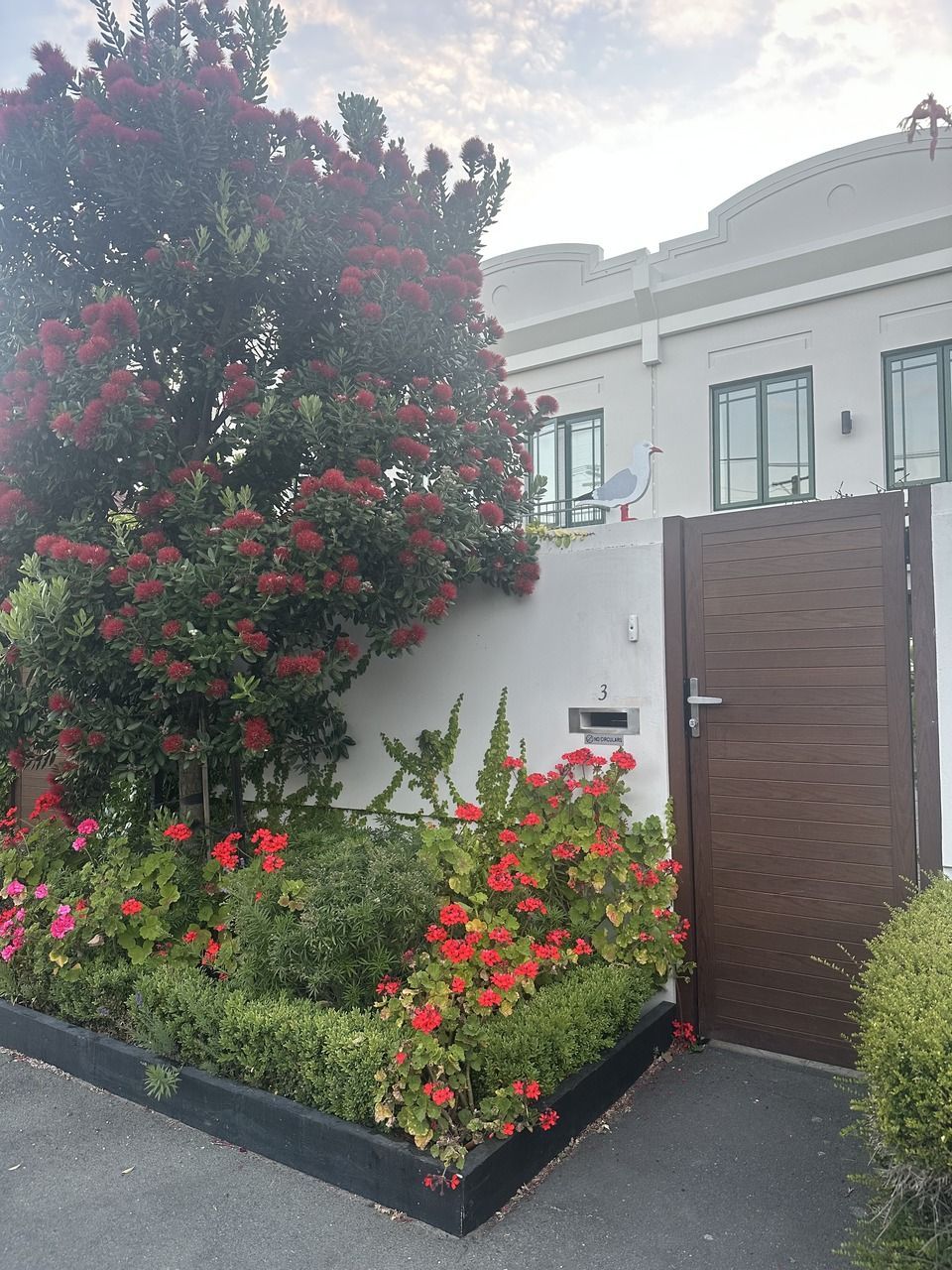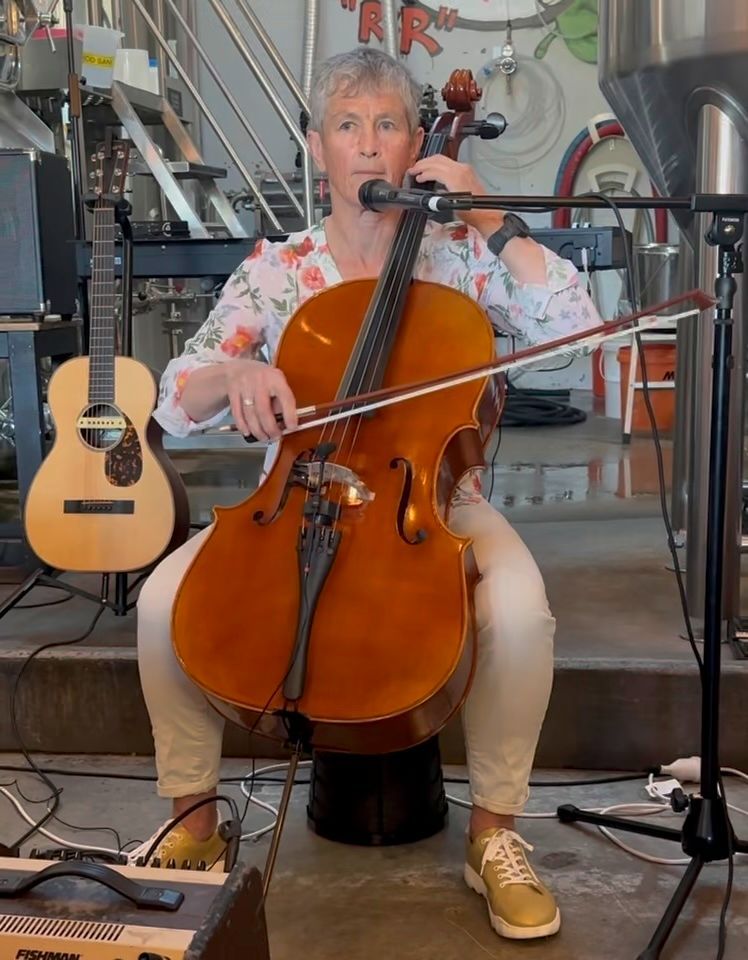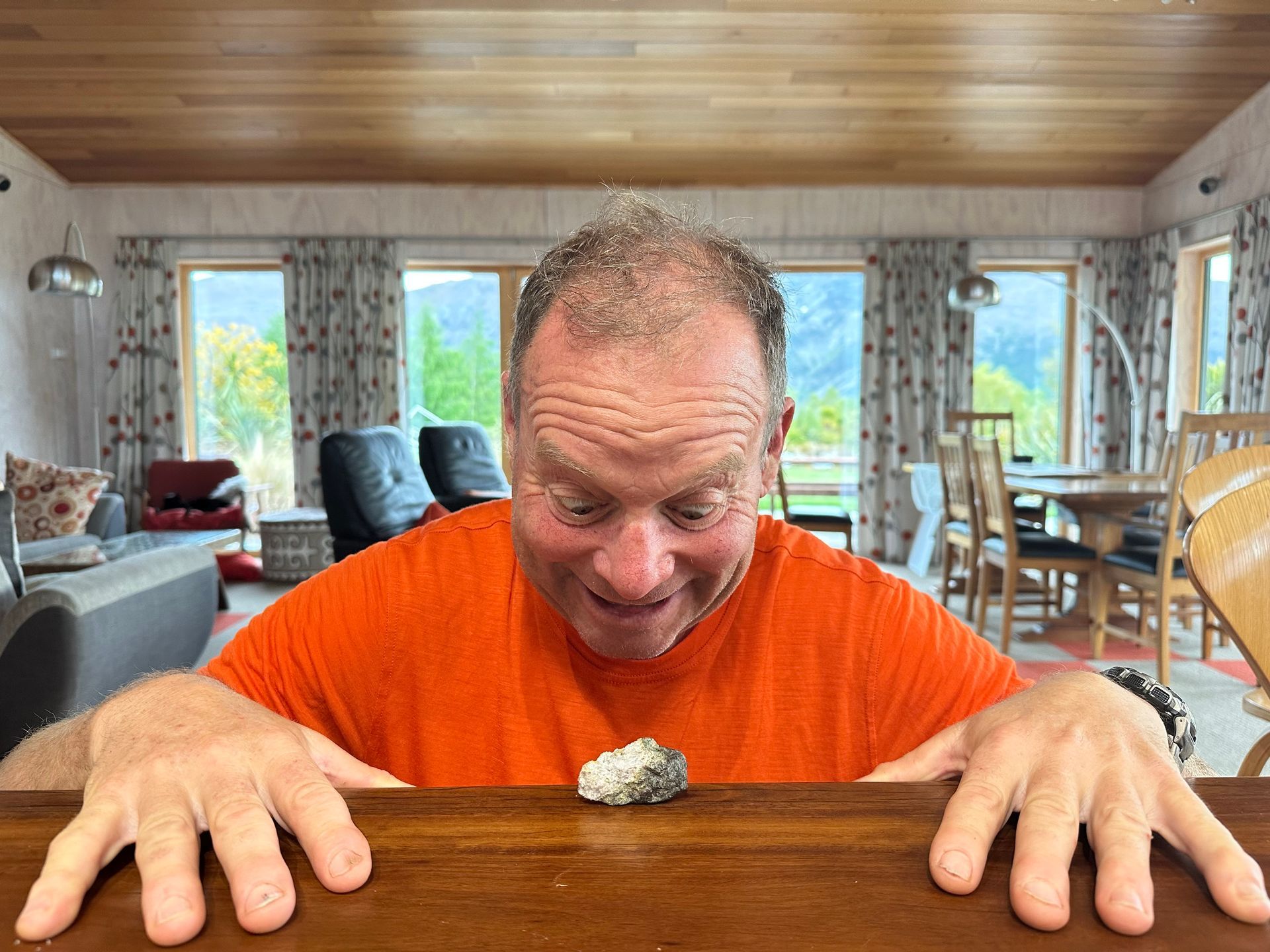The crevasses open
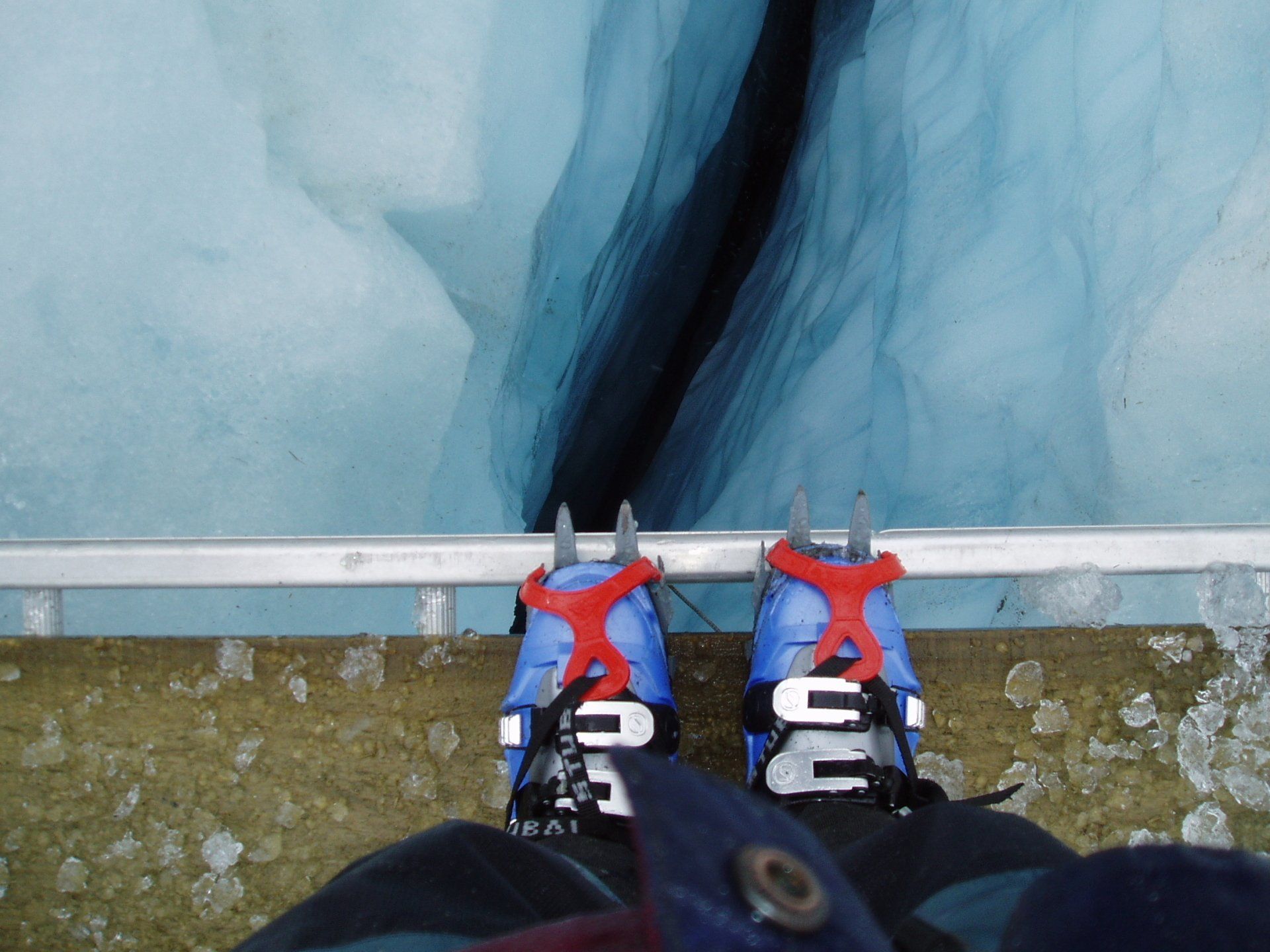
When you are mountaineering or ski touring on a glacier, you need to be prepared for the inevitable crevasses. Crevasses form as the result of differential rates of movement in the ice – such as when the glacier goes over an edge and falls down a steep section of the valley. When you look down crevasses you often can’t see the bottom, although you know one is there. In the case above there was little risk to me because I was on a bridge on a walk created for tourists on the Franz Joseph Glacier that we had arrived at, after ski touring down from higher on the glacier. However, if you aren’t on such a path, the general principle is that you rope up with the members of your party such that, if one of you falls in a glacier, they are attached to the other people who can then help them get out.
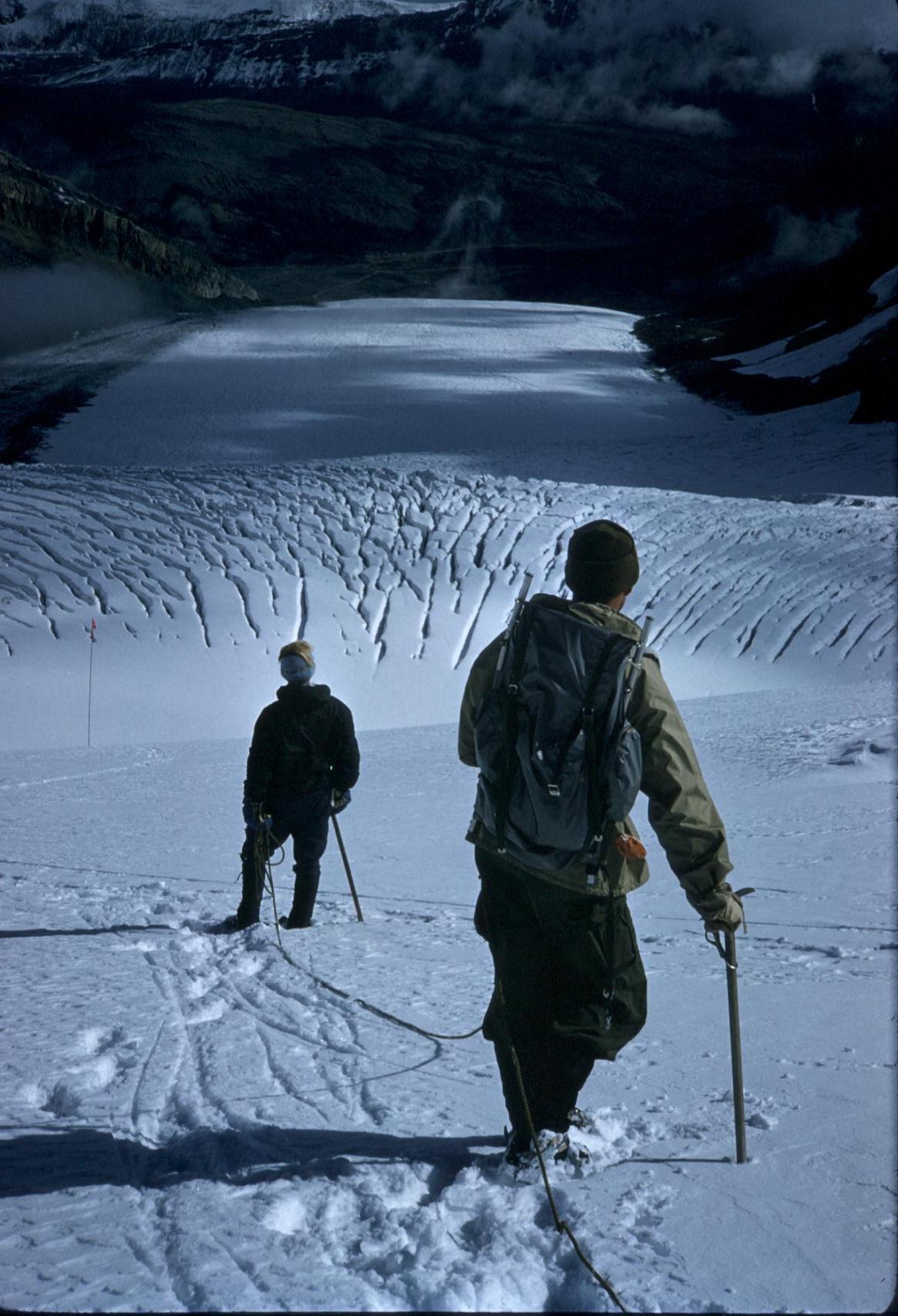
The dangerous crevasses, of course, are not the ones that you can see but the ones that remain invisible until you fall into them.
I feel like the world is full of unplumbed depths at present, with the visible gulfs being potentially navigable but spectres of unseen hazards being everywhere. Sarah told us that she is limiting her news intake to the Economist in the mornings and I think she is right on track. It is very easy to spiral many drains at present, to no utility given that most of us can have little bearing on the majority of the state of the world. Worse, I feel that the crevasses are opening up in a way that we are divided into parties on opposite sides, without ropes in between and no way of rescuing people we can hear shouting from down below. Small niggles easily turn into big issues in a fragmented world. Opinions seem to be being stated more strongly by many and it feels hard to remain tolerant, or even semi-tolerant of views that one vehemently opposes. How does one remain on civil terms, let alone be friends, with people whose views you believe are in direct opposition to the wellbeing of the world.
Perhaps a starting point is to remember again that each of us only have that very minor effect on the world, so one’s friends will have about as much effect as oneself i.e. not much. Therefore, convincing one’s friends to change their opinions (and I do realise how unlikely one is to succeed in that!) is not perhaps as important as one might think. Furthermore, having friends, on whom one can rely, is ever more important in a time of stress and upheaval. If someone thinks Trump is a good guy, that doesn’t mean they won’t come to your aid if you are feeling sad.
A much trickier realm of dispute is where one considers that the person’s beliefs might be directly related to harm to ourselves or others. As an example, let’s take broad spectrum anti-vaxxers i.e. those people who don’t believe in vaccinations in general (as opposed to not wanting a specific vaccine for a specific and validated reason). The end points of the vaccination debate are truly poles apart and this is an issue with potential to divide at any time, but particularly now, when vaccination against COVID-19 offers a uniquely powerful tool to reduce infections.
I had a discussion with a friend about anti-vaxxers in one’s community. My friend, as a nurse, is concerned for her patients, many of whom will not survive infection with COVID-19 but may go on to have substantial lives once recovered from their hospital stay. Her patients need COVID-19 to stay controlled in New Zealand. She feels that, as a German, it is particularly important for her to speak out on issues she sees as important, because many Germans tolerated the rise of Hitler, rather than speaking against him. That path of avoidance led the world into a very dark era. Anti-vaxxers have the potential power to derail the process of COVID-19 vaccination through refusing vaccinations and swaying the opinions of those undecided about being vaccinated. For a vaccine to have a significant effect, we need a sufficient mass of the population to be vaccinated to create herd immunity i.e. a scenario in which there are so many people resistant to the disease that a person with COVID-19 will not encounter another person whom they can infect.
Here’s an interesting post where a US physician did some rough calculations as to rates and numbers of vaccination in the USA in relation to when herd immunity might be achieved. There are large numbers of assumptions in there (including that around 9% of the population are already immune through having had COVID-19, the vaccine is 90% effective, everyone in the USA can get vaccinated in April 2021) but it provides a point of reference. Low confidence in a vaccine will delay herd immunity by 1.5 years in this unreal scenario where everyone could be vaccinated in April 2021. Note here that I am trying to keep myself away from the mental crevasse where the bottom is several more years distant, because vaccination progresses slowly and more infectious strains of disease propagate.

So whose job is it to educate anti-vaxxers, or inform nervous vaxxers, about the importance of COVID-19 vaccines once reasonably proven and validated? Is it the role of the government? Is it the role of the medical profession? Is it the role of everyone in society who believes in vaccinations? My answer would be that it is the role of all three. The tightrope to walk is that, as friends, we only have a modicum of influence. If we (or they) sever our friendship connections, we have no influence at all. There is huge risk in the echo-chambers that always exist in society, where like-minded people reinforce eachothers’ views; echo-chambers are being strengthened mightily by social media. It is essential to a healthy society that we keep trying to see, understand and cross the divides. The anti-vaxxers are over there on the other side of the crevasses. We need to throw a rope across so we can all walk together safely – we can pull them out of a crevasse and they can pull us too. If they like us, maybe they will.

